Graphics Reference
In-Depth Information
Fig. 5.4
Three-dimensional reconstruction of the cuboid
examined by Kuhl (
2005
) and Kuhl et al. (
2006
)(cf.Fig.
5.2
), which were refined
and extended in later experiments (d'Angelo,
2007
; Wöhler et al.,
2009
). In order to
distinguish random fluctuations from systematic deviations, the error measures ac-
cording to (
5.2
)-(
5.4
) were computed for 100 runs for each example. For the utilised
camera, the noise of the pixel grey values is proportional to the square root of the
grey values themselves. Empirically, we determined for the standa
rd
deviation of
a pixel with 8-bit grey value
I
0
.
22
√
I
. For each of
the 100 runs, we added a corresponding amount of Gaussian noise to the images of
the sequence. The noise leads to a standard deviation of the feature positions
∈[
0
...
255
]
the value
σ
I
=
S
i
x
k
obtained by the KLT tracker of 0
.
1pixel.
Cuboid Sequence
To demonstrate the performance of our approach on a non-
planar test object of known geometry, it was applied to the cuboid-shaped object
shown in Fig.
5.2
a. This object displays a sufficient amount of texture to generate
'good features to track' (Shi and Tomasi,
1994
). In addition, black markers on white
background with known mutual distances are placed near the edges of the cuboid.
The three-dimensional coordinates of the scene points are obtained by minimising
the error term
E
comb
according to (
5.1
) with
α
=
0
.
5 as the weight parameter. This
value of
α
is used in all subsequent experiments. Tracking outliers are removed
by determining the features with reprojection errors of more than 3
E
reprojection
and
neglecting them in a subsequent second bundle adjustment step.
The three-dimensional reconstruction result for the cuboid sequence is shown in
Fig.
5.4
. The reprojection error amounts to
E
reprojection
=
0
.
642 pixel and the defo-
cus error to
E
defocus
=
0
.
64 pixel. In order to verify the absolute scale, we compared
the reconstructed pairwise distances between the black markers on the object (as
seen e.g. in the top right corner of the front side) to the corresponding true distances.
For this comparison we utilised a set of six pairs of markers with an average true
distance of 32
.
0 mm. The corresponding reconstructed average distance amounts to
34
.
1 mm (cf. Table
5.1
).
Bottle Sequence
As a further real-world object, a bottle displaying a cylindri-
cally shaped lower half of 80
.
0 mm diameter has been regarded (cf. Fig.
5.2
b). No








































































































































































































































































































Search WWH ::

Custom Search